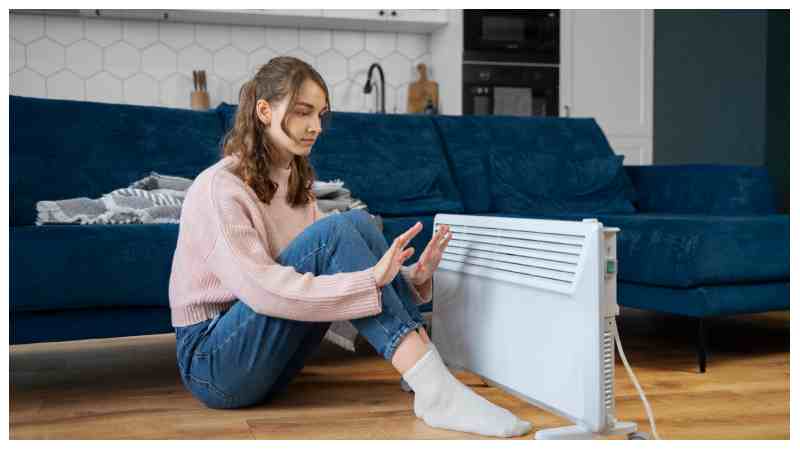When it comes to maintaining a comfortable home year-round, your HVAC system plays a critical role. Whether you live in a region with blazing summers or freezing winters, your heating, ventilation, and air conditioning (HVAC) system works tirelessly to keep your indoor environment stable. However, without proper care, your system can quickly become an energy hog, driving up your utility bills and shortening its lifespan.
The good news? With a few smart energy-saving HVAC care tips, you can improve your system’s efficiency, extend its service life, and save money. Let’s explore practical, homeowner-friendly strategies to make your HVAC system more energy-efficient while maintaining the comfort you rely on.
1. Schedule Regular HVAC Maintenance
Routine maintenance is the foundation of an energy-efficient HVAC system. Most homeowners only call for service when something breaks, but preventative care can reduce energy consumption and prevent costly repairs.
Why Maintenance Matters
Over time, components like filters, coils, and fans collect dirt and debris. This buildup forces your system to work harder to move air, which increases energy use. Regular maintenance keeps these parts clean and ensures your system operates at peak performance.
Professional Tune-Ups
It’s a good idea to schedule a professional HVAC tune-up twice a year—once in the spring before cooling season and again in the fall before heating season. During these visits, a technician will:
-
Clean coils and blower components
-
Inspect refrigerant levels and adjust if needed
-
Tighten electrical connections
-
Lubricate moving parts
-
Test thermostat accuracy
-
Check and replace air filters
This proactive care can boost efficiency by up to 15%, according to the U.S. Department of Energy.
2. Replace Air Filters Regularly
One of the simplest and most effective HVAC maintenance tips is replacing your air filters on time. A clogged filter restricts airflow, forcing your system to work harder to push air through your home.
When to Replace Filters
For most homes, filters should be replaced every 30 to 90 days, depending on factors such as:
-
Number of occupants
-
Presence of pets
-
Air quality in your area
-
Type of filter used
High-efficiency filters (HEPA or MERV-rated) trap more particles, improving indoor air quality while maintaining good airflow. Keeping filters clean not only saves energy but also protects your HVAC system from unnecessary strain.
3. Seal and Insulate Ductwork
Leaky ducts are one of the biggest culprits behind energy waste in homes with central HVAC systems. In many cases, 20–30% of conditioned air can escape through gaps or poorly sealed ducts before it even reaches your living spaces.
How to Fix Duct Leaks
Inspect accessible ducts in attics, basements, or crawl spaces for holes or loose connections. Use mastic sealant or metal foil tape (not standard duct tape) to seal leaks. Then, add insulation around ducts that run through unconditioned spaces to reduce energy loss.
Properly sealed and insulated ducts ensure that the air your HVAC system works hard to heat or cool actually reaches your rooms efficiently.
4. Use a Programmable or Smart Thermostat
Modern thermostats are among the best tools for improving home energy efficiency. By automatically adjusting your HVAC settings based on your daily schedule, these devices reduce energy use when heating or cooling isn’t needed.
Benefits of Smart Thermostats
A programmable or smart thermostat can save homeowners up to 10% annually on heating and cooling costs. Many models allow you to:
-
Set temperature schedules
-
Monitor energy usage
-
Control the system remotely through a smartphone app
-
Integrate with home automation systems
For example, you can program the thermostat to lower the temperature while you’re at work and warm up the house just before you return. Small adjustments like these add up to big savings over time.
5. Keep Vents and Registers Clear
Blocked air vents disrupt your HVAC’s airflow balance, making it harder for the system to maintain your desired temperature. When furniture, curtains, or rugs cover vents, your system must work longer and harder, wasting energy.
Simple Fixes for Better Airflow
Walk through your home and ensure all vents and registers are unobstructed. Vacuum away dust or pet hair buildup. Evenly distributed airflow improves comfort and allows your system to operate efficiently.
6. Maintain Proper Thermostat Settings
The right thermostat setting can dramatically impact your HVAC energy consumption. Adjusting the temperature by just a few degrees can make a noticeable difference.
Recommended Settings
-
In summer: Set the thermostat to 78°F (26°C) when you’re home and higher when you’re away.
-
In winter: Set it to 68°F (20°C) when home and lower while sleeping or away.
Using ceiling fans during summer can also help circulate cool air, allowing you to raise the thermostat setting without sacrificing comfort.
7. Keep Outdoor Units Clean and Unobstructed
If you have a central air conditioner or heat pump, the outdoor condenser unit is vital for efficient performance. Dirt, leaves, and debris can block airflow and reduce the system’s ability to release heat.
Outdoor Unit Care
-
Clear vegetation or objects within two feet of the unit.
-
Gently rinse coils with a garden hose to remove dust and debris.
-
Inspect for bent fins or damage and have them repaired if necessary.
A clean, well-ventilated outdoor unit can significantly improve your system’s cooling efficiency.
8. Check Insulation and Home Sealing
Even the most efficient HVAC system can’t perform well if your home leaks air. Poor insulation or gaps around doors and windows allow conditioned air to escape and outside air to enter, forcing your HVAC to run longer.
Simple Weatherproofing Steps
-
Add weatherstripping to doors and windows.
-
Seal gaps with caulk or expanding foam.
-
Insulate attics, basements, and crawl spaces.
A well-insulated home works in harmony with your HVAC system, reducing strain and energy costs.
9. Upgrade to Energy-Efficient Equipment
If your HVAC system is more than 10–15 years old, it may be time to consider upgrading to a newer, high-efficiency model. Modern systems use advanced technology to provide better comfort with less energy.
What to Look For
-
ENERGY STAR® certification for verified efficiency
-
A high SEER (Seasonal Energy Efficiency Ratio) rating for air conditioners
-
A high AFUE (Annual Fuel Utilization Efficiency) rating for furnaces
While the upfront cost may seem steep, energy-efficient HVAC systems can reduce utility bills by 20–40% and pay for themselves over time through energy savings and rebates.
10. Use Zoning Systems or Variable-Speed HVAC
Traditional HVAC systems treat your entire home as one zone, even if certain rooms need more or less heating or cooling. A zoning system allows you to control different areas separately, improving comfort and efficiency.
Advantages of Zoning Systems
-
Reduce energy waste in unused rooms
-
Maintain consistent temperatures in multi-story homes
-
Extend equipment life by reducing run time
Similarly, variable-speed HVAC systems adjust airflow and output to match your home’s needs in real time, minimizing energy use while maintaining consistent comfort.
11. Manage Humidity Levels
Humidity plays a big role in how comfortable your home feels and how efficiently your HVAC system operates. High humidity makes summer air feel warmer, causing you to lower the thermostat and use more energy.
Solutions
-
Use a dehumidifier to maintain indoor humidity between 30–50%.
-
Ensure your HVAC’s condensate drain is clear and functioning.
-
Seal leaks around ducts to prevent moisture infiltration.
Proper humidity control allows your system to cool your home more effectively and prevents mold or mildew growth.
12. Don’t Forget About the Thermostat Location
Many homeowners don’t realize that thermostat placement can affect energy efficiency. If the thermostat is near windows, doors, or direct sunlight, it may misread your home’s actual temperature and overwork your HVAC.
Best Placement Tips
-
Install the thermostat on an interior wall away from direct sunlight and drafts.
-
Keep it away from kitchens or heat-generating appliances.
-
Ensure good airflow around the thermostat for accurate readings.
Correct placement ensures your HVAC system responds accurately to your home’s true temperature.
13. Consider Annual Energy Audits
For a comprehensive look at how your home uses energy, schedule a home energy audit. Professionals use infrared cameras and blower door tests to identify air leaks, insulation gaps, and inefficient HVAC performance.
An audit provides a detailed report of where your home is losing energy and offers cost-effective solutions to boost efficiency.
14. Adopt Energy-Saving Habits
Even small behavioral changes can enhance HVAC efficiency:
-
Close blinds and curtains during hot afternoons to block solar heat.
-
Open windows on cool nights to reduce AC use.
-
Avoid heat-generating appliances (like ovens) during peak summer hours.
These habits support your HVAC system and reduce overall energy consumption.
Final Thoughts: Investing in Long-Term Efficiency
Energy-saving HVAC care is not just about cutting utility bills—it’s about creating a more sustainable and comfortable home environment. Regular maintenance, smart thermostat use, duct sealing, and timely upgrades all contribute to long-term performance and reliability.
By following these energy-saving HVAC care tips, every homeowner can enjoy lower energy costs, fewer breakdowns, and a cleaner, healthier home. Remember: an efficient HVAC system isn’t just good for your wallet—it’s good for the planet.

